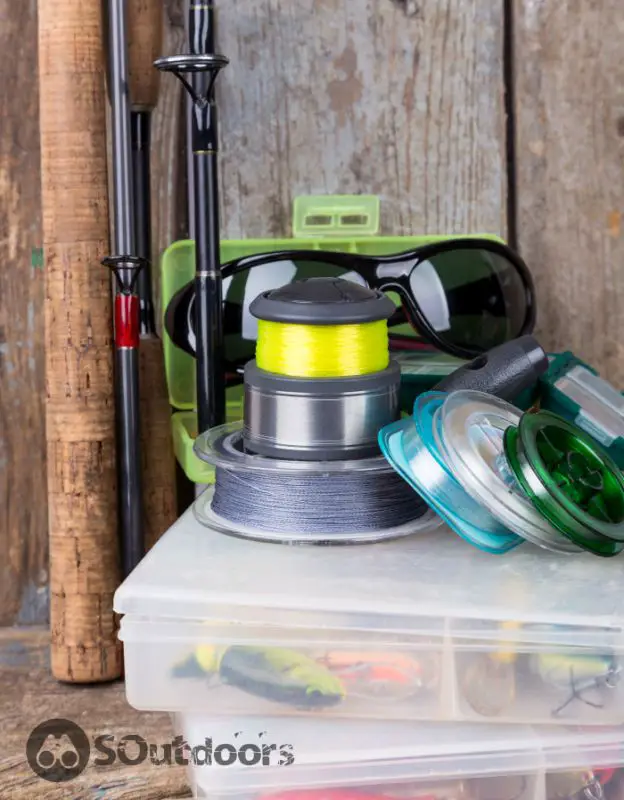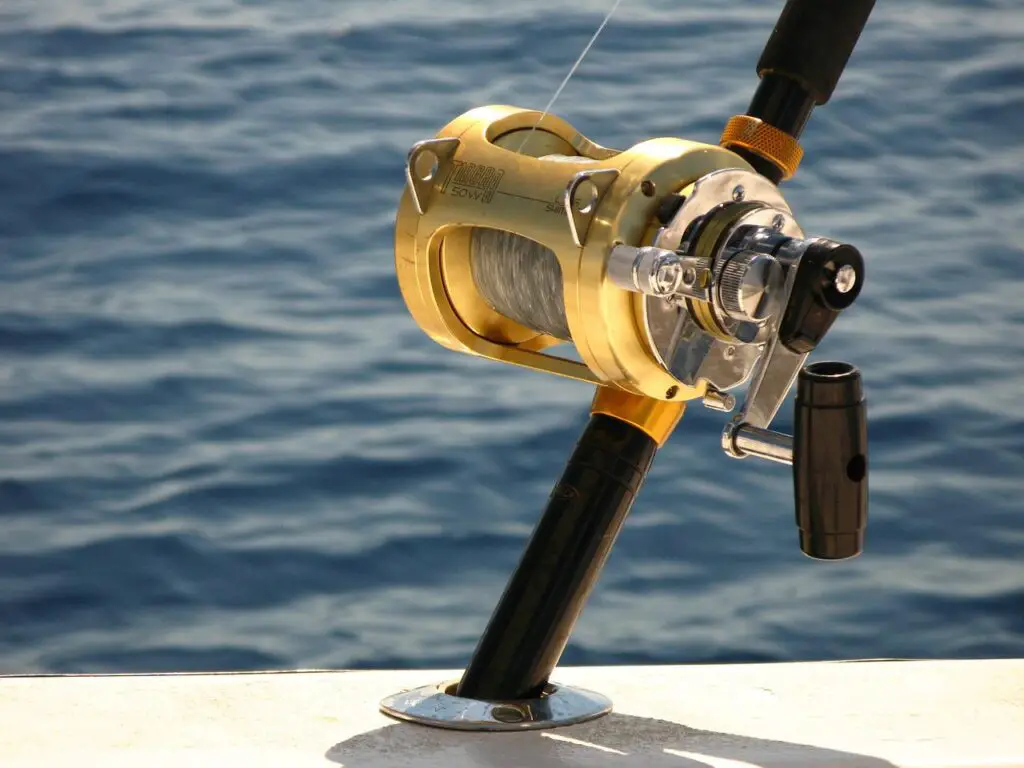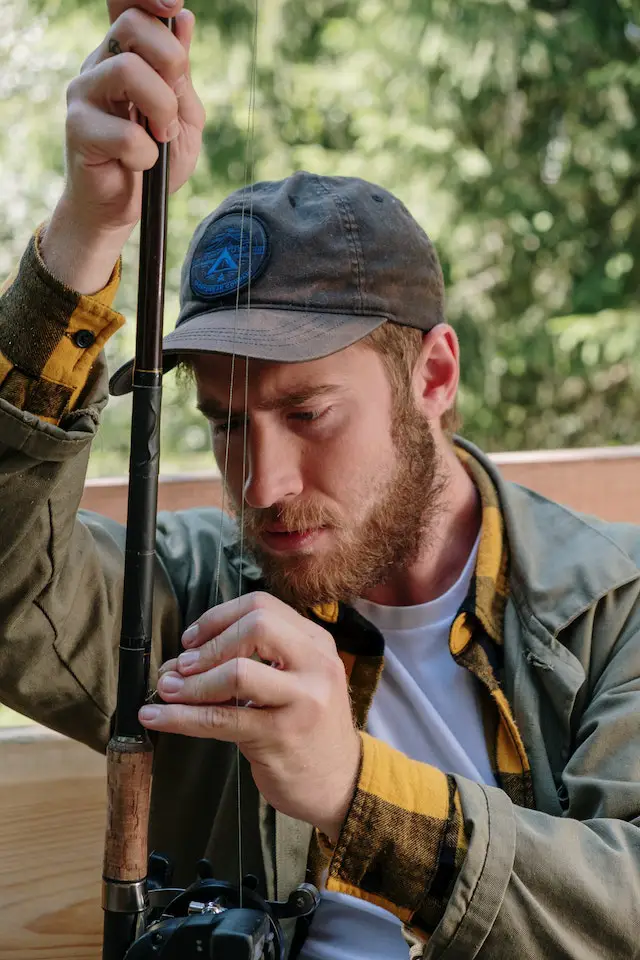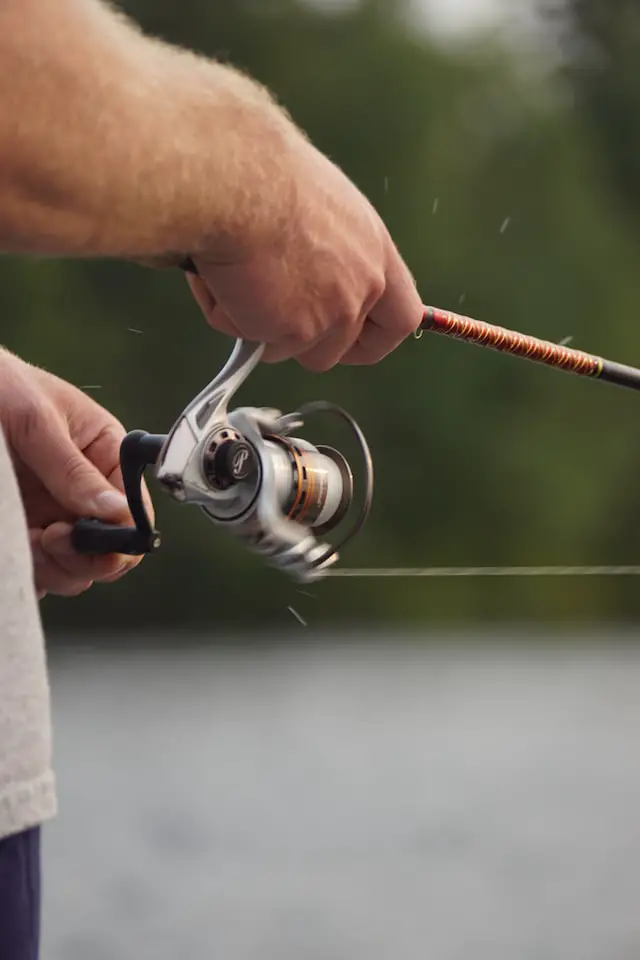Braided lines have many benefits and one big flaw. Namely, if you spool braid directly onto a spinning reel, you are likely to face problems.
A braided line does not have as good of a grip as a monofilament line. As a result, line slippage is a common issue when a braided fishing line is spooled directly onto a spinning reel.
What can you do to resolve this problem?
Luckily, there is an easy solution – using mono backing! Adding monofilament backing to your spinning reel before spooling the braid prevents the line slippage and losing your valuable catch. It helps improve your hook rate and capture more fish!
Stay tuned if you want to learn how to use mono backing when spooling braid onto spinning reels. I’ll teach you everything you need to know!
Should You Use Braided Fishing Lines?

Unlike mono fishing lines, braided lines are made from a few separate fiber strands. These strands are joined (braided) into one strong line making the braid the most resilient type of fishing line you can use.
Advantages Of Using Braid
- Extra strong (suitable for fishing heavy water vegetation)
- Durable & long-lasting, even in challenging saltwater conditions
- Able to hold quite a lot of weight
- Best option for deep-water fishing
- No line stretching (enables long-distance casting and provides anglers with an exceptional casting accuracy)
- Incredibly sensitive (perfect for fishing small lures in windy conditions)
- Small line diameter (ideal for finesse fishing)
Disadvantages Of Using Braid
- Highly visible in the water (can be resolved by using a mono leader, but can also be a good thing if you have poor eyesight)
- Comes in only a couple of different colors
- Susceptible to abrasion damage
- Difficult to cut through (It can be resolved with a pair of the best fishing pliers!)
- Does not hold knots as well as other types of lines
Braided Line & Spinning Reels Combo: Yes Or No?

Braided lines are one of the best types of fishing lines to use with spinning reels. However, anglers using this combo often encounter problems when out on the water.
Since the surface of the braid is a bit slippery, it does not have a good grip and tends to slide off the sleek aluminum surface of spinning reels. When that occurs, the fishing line peels off the spool and begins rotating around it.
It usually happens while anglers are battling their catch, especially if it’s a big fish. Unfortunately, once the braid slips off, there is little (if anything) that even pro fishermen can do. Retrieving the line by turning the handle becomes mission impossible, and the angler is destined to lose the hooked fish.
Is there a solution?
There are a few preventive measures you can apply to avoid braid slippage. For instance, you can buy one of many braid-ready spinning reels available on the market. You can also use some electrical tape to cover the surface of the spool before you load the braid.
One of the most popular (and most effective) solutions for the braid slippage problem is using a monofilament backing. Let’s learn more about it!
Why Should You Use Mono Backing For Braided Lines?
Superior Grip
As I have already established, monofilament line grips into the arbor; it’s thus of great help in preventing your braid from slipping off the spool and spinning freely. It enables you to reel in the trophy fish, fighting you every step of the way, without the risk of losing it due to line slippage.
Yet, preventing fishing line slippage (even though a tremendous asset) is not the only reason to use a monofilament line when spooling braid onto a spinning reel. It can help you save some hard-earned money too!
Low Cost
Braid line costs more than monofilament line. The price difference is not necessarily substantial, but it’s possible to save at least a few bucks, especially when loading a larger reel. So, why not be cost-effective?
Braided lines typically sell in 150-yd spools. Hence, you need at least two spools to fill a 3000-series fishing reel. But you can easily substitute one spool of braided with a spool of mono fishing line.
Monofilament line is more than twice the diameter of braid (at more-less the same breaking strength), and you thus need less of it to fill your spool. Of course, braided is much stronger (about four times more than mono of the same diameter), but there is little chance you’ll ever need to use your backing line anyway.
And mono line is not your only option for backing when using braid on a spinning reel. You can use fluorocarbon line too. However, most experienced anglers prefer mono-line backing, as it costs less and provides a better grip.
Extra Advice:
I have heard of some anglers trying to cut down on their costs by underfilling their reels. Do not do this – fill the spool appropriately! When there is a gap at the top of the spool, the line creates a lot of unwanted friction while it leaves the reel and will thus hinder your casting distance.
What Size Monofilament Line To Use As Backing For Braid?

There are different opinions when it comes to deciding what size mono to use as backing. Most anglers try to match the diameter of the braid used as the main line. This is a valid solution if you are using just enough braid to cover your needs, and there is a chance you’ll have to use the backing line too.
You should stay in the 6 -10 lb. range. Here are the usual combinations when using monofilament as backing for a spinning reel:
- 6 lb mono & 10 lb braid main line
- 8 lb mono & 20 lb braid main line
- 10 lb mono & 30 lb braid main line
If you spool more than enough line, the size of your backing won’t make much of a difference as you won’t use it. However, try not to use extremely heavy backing.
If your monofilament line is too thick, it can lay uneven. The large knot might create a bulge and is more likely to break under pressure too.
To learn more about choosing the right size mono, watch the video below:
How Much Monofilament Line To Use As Backing For A Braided Line?

Anglers often wonder how much backing they need for their braid. So, let’s dig into it!
If you are rather nonchalant than punctilious, you can try to estimate how much backing line you need. In general, you can use only a few wraps of backing or fill up to 3/4 of your spool. It depends on the amount of the braided line you plan to use.
As a rule, you need more braid than backing when trolling in deep water. The opposite is true when casting and retrieving from shore or boat.
The one thing you must remember is to leave enough space to put at least 100 yards of braid on top of your backing. You should also try not to overfill the reel (leave about 1⁄8 inch of space from the edge).
If you are a perfectionist, and you want to calculate the perfect amount of monofilament line you should spool as backing, you can apply the formula I am about to explain.
Before you start calculating, you need to determine :
- The reel’s line capacity.
- The diameter of the braid line
- The diameter of the mono line
Start by calculating the total capacity of the reel. To do this, you must multiply the reel’s line capacity (how many yards the spool can hold) by the braided line diameter in inches.
Next, calculate the braid capacity using the exact same formula. This time around, you must multiply the number of yards of the braided line you wish to spool onto your reel by its diameter in inches.
It is time to calculate the remaining capacity. To do this, you must subtract the braid capacity from the total capacity.
Now that you have all this data, you can finally calculate how many yards of mono line backing you need to fill your spinning reel perfectly. So, to finish, divide the remaining capacity by the diameter of the mono line you are using (in inches). The number you get represents the amount of mono you need for backing your braid.
What Is The Best Mono To Braid Knot?

The breaking strength of your braid largely depends on your choice of knot and how well you tie it. Even though some anglers might not agree, I believe the two best all-around mono-to-braid knots are the Improved FG Knot and the Double Uni Knot.
The Improved FG Knot
You can tie this knot with either a single or double strand of a braid and mono line backing. This thin and strong knot is one of the best options when fishing heavy drag on light reels. Watch the video below to learn how to tie it:
The Double Uni Knot
This knot s one of the simplest and fastest knots. Yet, it is one of the most reliable mono-to-braid knots. The Uni Knot is suitable for fish hook tying as well. Here is a video explaining how to tie it:
FAQs
Do you need a mono backing for braided line?
You need a mono backing for braided line. It provides a much better grip and prevents your fishing line from slipping off the spool while you fight your fish. Besides, mono is cheaper than braid and can thus help you save some money too.
How do you calculate mono backing?
You calculate mono backing by calculating the total capacity of the reel, the braid capacity, and the remaining capacity. Once you do that, you must divide the remaining capacity by the diameter of the mono line you use to determine the amount of backing you need.
Why do you need a mono leader with braid?
You need a mono leader with braid because braided lines are more visible in the water and can spook the fish you are trying to capture. Monofilament lines are more visible than fluorocarbon lines, though. So, if you want the most invisible line on the market, go for the latter.
Can you tie braid directly to the spool?
You can tie braid directly to the spool, but that could cost you a lot of headaches. It is much better to use a monofilament line as backing and avoid line slippage braid is susceptible to.
What is the strongest braid-to-mono knot?
The strongest braid-to-mono knot is the Improved FG knot. The Double Uni Knot is also an easy, reliable line-to-line connection you can use to tie two lines of relatively similar diameter.
Wrapping Up

Using a braided line is highly beneficial, as long as you don’t allow it to slip off the reel. No amount of tutorial videos can help you avoid braid slippage, though. The best solution is to use a monofilament fishing line as backing!
Once you add backing, you improve your chances of catching fish and cut down on costs too! So why not give it a go?
There is no need to browse other sites if you have trouble using a monofilament fishing line as braid backing. Simply state your problem in the comment section, and I will do my best to resolve it!
